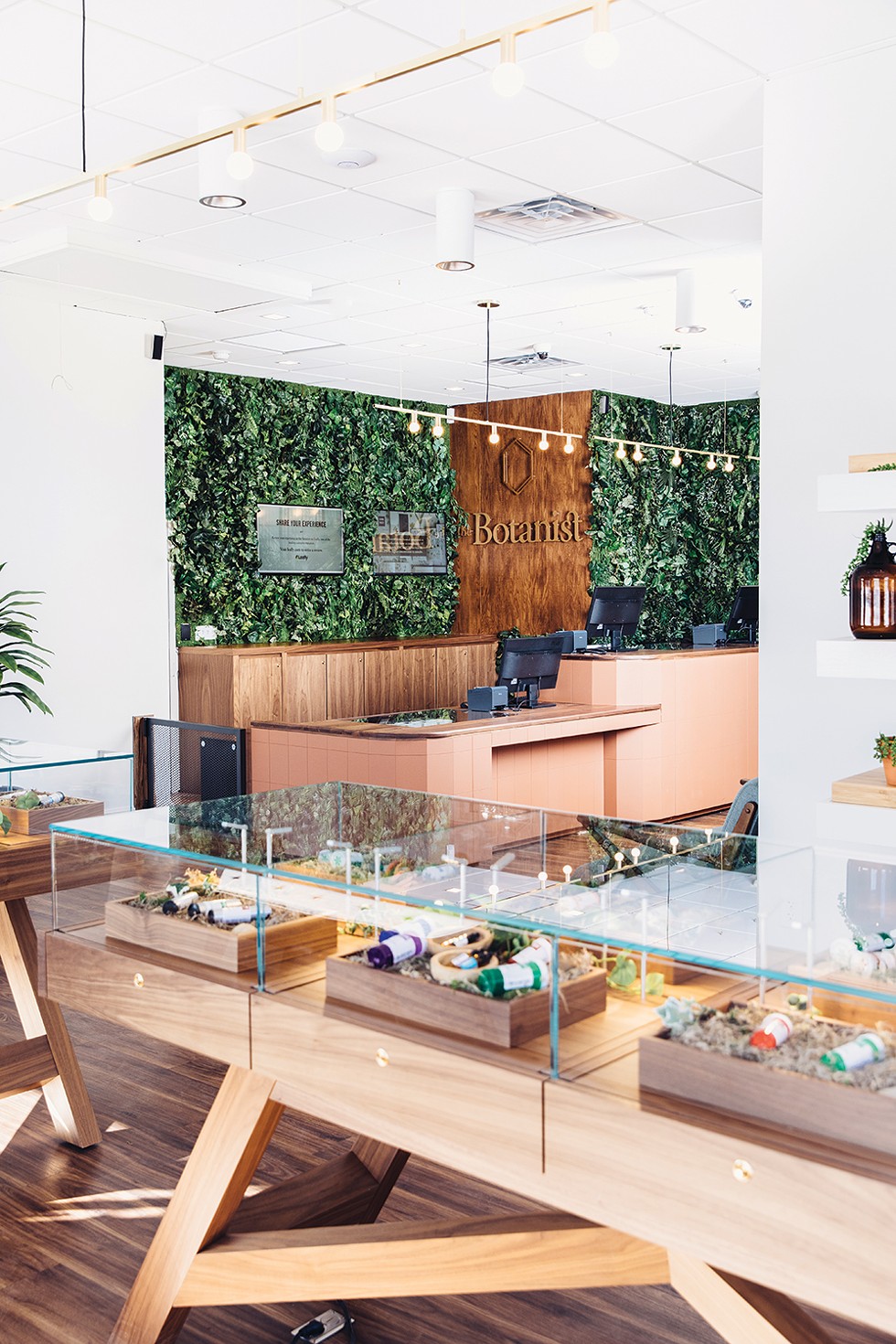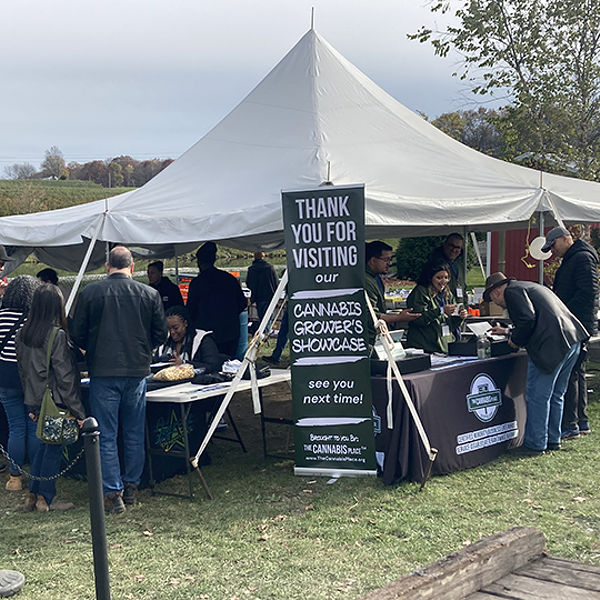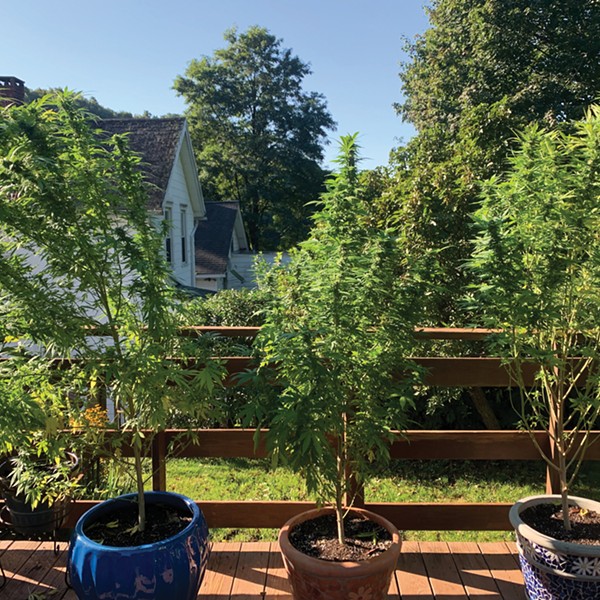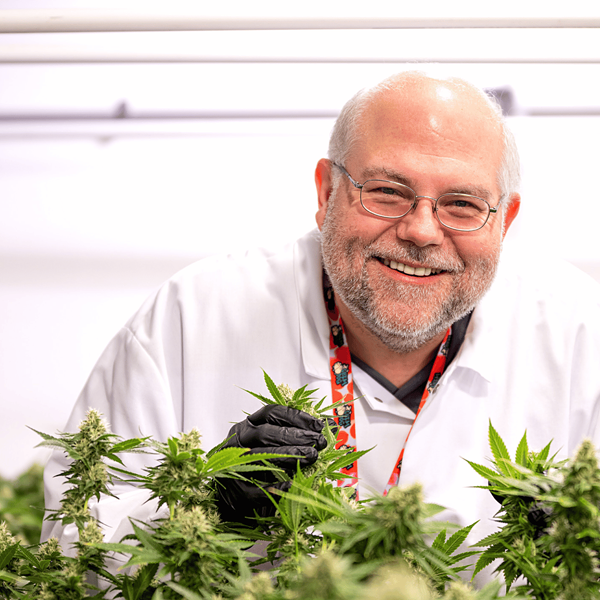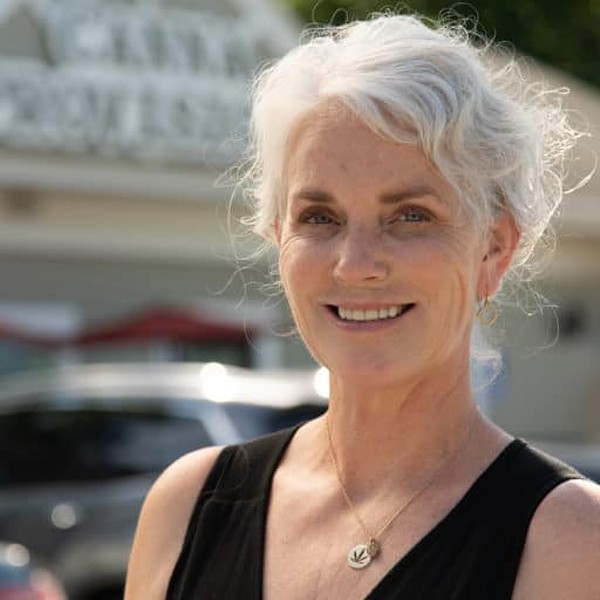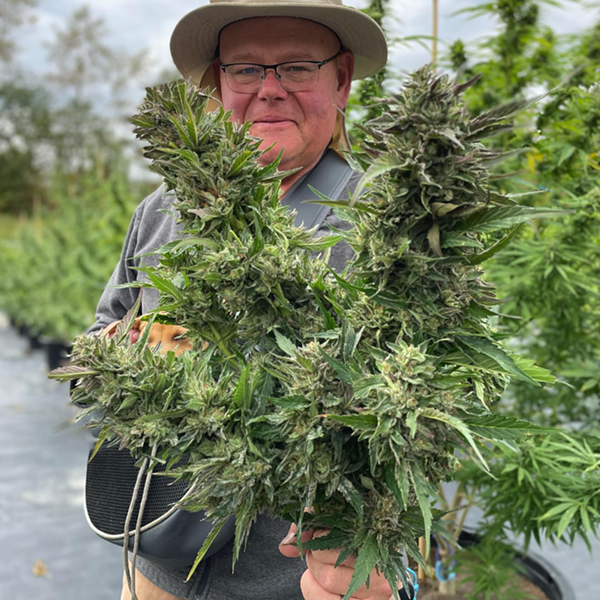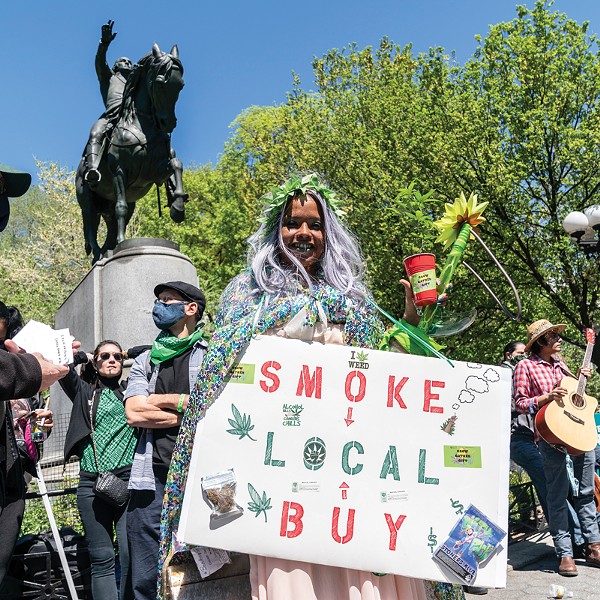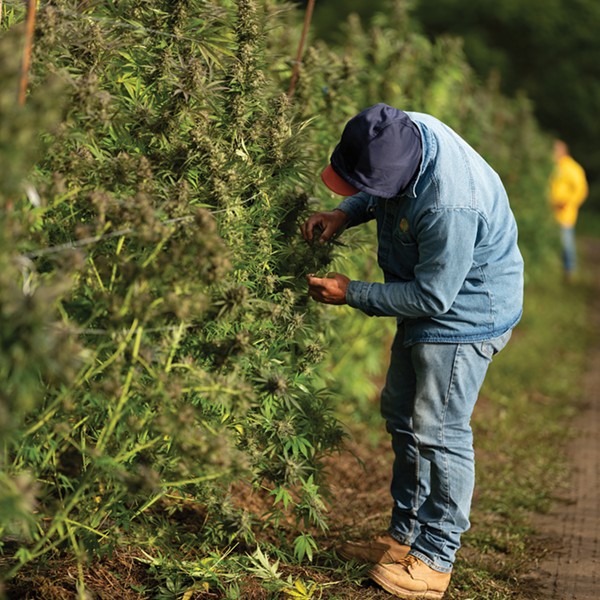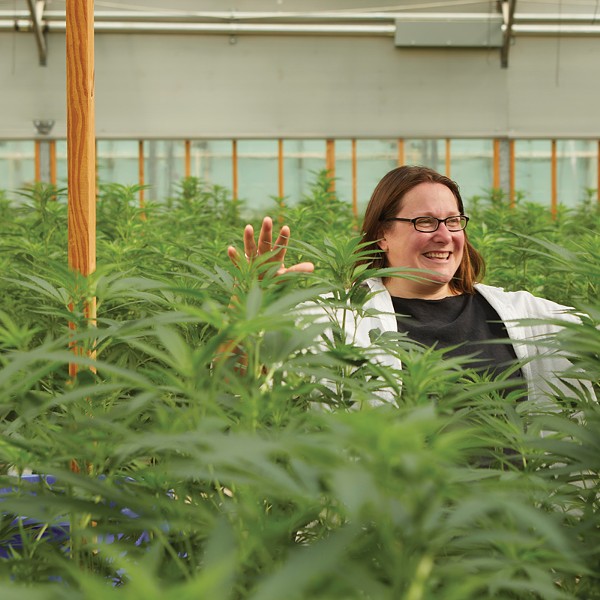With the close of yet another legislative session on June 19, New York again failed to pass the Marihuana Regulation and Taxation Act (MRTA) for the sixth year in a row, though this was the first time that it had seemed possible. Earlier in the year, Governor Cuomo made cannabis reform a core component of his State of the State address, and the Assembly and newly Democrat-controlled Senate were able to push through a raft of other progressive legislation, encompassing climate change, rent control, and driver's licenses for undocumented immigrants.
But legal weed, once again, died on the vine. "Whenever big changes are proposed in the way things have been done for a long time, people will be wary," says Senator Liz Krueger (D-Manhattan), who first introduced the MRTA in December 2013. "I heard many good-faith concerns from my colleagues, many of which I believe have been addressed in new versions of the bill, but we ran out of time before we could make it across the finish line."
"There were many good-faith concerns" would be a fitting epitaph for the MRTA. What had earlier in the year seemed like a foregone conclusion—the legalization of recreational marijuana for adult use in New York—was reined in by police unions and PTAs, scaremongering anti-legalization groups, and a cold-footed Democratic caucus whose differences seemed to grow by the day. On the other side, the push to reform marijuana policy in the state of the Rockefeller drug laws included movements driven by social and criminal justice reformers, small farmers, tourism, health care, and agribusiness. It promises to be an incredibly complex industry, and a very lucrative one: The state estimates revenues of half a billion dollars in the first year alone.
That's why everyone—from farmers, investors, and activists to state legislators and the people on your block—seems to be talking about weed these days. Public conversations are happening throughout the Hudson Valley. A few weeks before the close of session, two dozen people packed into a slim gallery space in Midtown Kingston, for a "cannabis chat" led by Andi Novick, cofounder of the New York Small Farm Alliance of Cannabis Growers and Supporters. The gathered throng displayed a wide range in familiarity levels with the plant and the legislation, and competing passions and prerogatives. The room was heavily in favor of ending prohibition, so it wasn't a perfect analogy for the crowded field of cannabis reform, but the symbolism was unmissable.
I talked to more than 20 people on all sides of the issue for this article and came away both more convinced that cannabis reform will happen in New York one day and clearer on why it hasn't yet. "It touches lots of different agencies and parts of the state," Senator Krueger says.
Though most New Yorkers now support pot legalization, there are many competing factions with different policy priorities. And if the destination is now generally agreed upon, the path forward still remains as tangled as ever.
How We Got Here
First, let's back up.Momentum toward legalization picked up in 2014, the year New York passed the Compassionate Care Act, aka the medical marijuana bill. On the eve of that session, Senator Krueger introduced the Marihuana Regulation and Taxation Act, a recreational bill that cherry-picked policies from other states and European markets that have ended cannabis prohibition. The MRTA would legalize recreational marijuana use for anyone over the age of 21, taxing and regulating it in a manner akin to the state's current treatment of alcohol and tobacco.
With slight tweaks, the MRTA has been reintroduced year after year, picking up cosponsors along the way. Majority leader Crystal Peoples-Stokes (D-Buffalo) sponsors the bill in the Assembly. In his 2019 State of the State address, Governor Cuomo proposed the creation of a new agency, the Office of Cannabis Management, to oversee the industry, estimating that tax revenue would be $300 million by 2023.
A 59-to 38-percent majority of New Yorkers now support the sale of legal marijuana, according to a Quinnipiac poll released in January, with little deviation between New York City, upstate, and suburban voters.
"We have the largest cannabis industry in the country, it's just that criminals run it all," Senator Krueger says. "Crystal Peoples-Stokes and I have been watching what's happened state by state, country by country, talking to regulators and advocates. I believe that New York State can have the best marijuana legalization in the country."
This year, Illinois became the 11th state, plus Washington, DC, to legalize recreational cannabis use since Colorado and Washington broke the seal in 2012. The laws vary, but what we know from other states is largely encouraging. A 2018 status report from the Drug Policy Alliance found that "states are saving money and protecting the public by comprehensively regulating marijuana for adult use." Weed-related arrests have plummeted (though racial disparities remain), youth marijuana use has not increased, and the total number of arrests for driving under the influence in Colorado and Washington has actually declined (road safety is the primary legalization concern of the police in New York).
Legalization also legitimized black-market jobs and created new ones, and sales and tax revenues exceeded initial estimates in each state, once consumers and regulators adjusted to new systems. One of the main drivers of this? Cannabis tourism. With 19 dispensaries (and counting) in Massachusetts, and New Jersey moving to legalize marijuana, there is some pressure for New York act before losing that slice of revenue to neighboring states.
And the Hudson Valley, in particular, stands to benefit, says Michael Amoroso, executive director of the Hudson Valley chapter of the National Organization for the Reform of Marijuana Laws. "You'd be hard-pressed to find elsewhere in the country such a major cannabis consumption market that sits alongside a corridor of higher education institutions and has an agricultural community in close proximity."
Follow the Money
Despite this year's failure, it seems to be a matter of when, not if, the wave of legalization will reach New York. And despite the competing agendas, by far the most common concern across camps is preventing a corporate cannabis takeover. "It's important to not let this industry go from one cartel to another," Novick says.That's also the main talking point of the major anti-legalization group active in New York: Smart Approaches to Marijuana, a nationwide nonprofit with 26 state chapters. "Big Marijuana is taking its playbook straight from its Big Tobacco and Alcohol industry investors," says Dr. Kevin Sabet, President of SAM NY and a former drug policy advisor to President Obama. "What will follow will not be more empowerment or opportunity but more health and economic harm."
Large multinational cannabis corporations are already sniffing around the New York market. MedMen, which generated nearly $40 million in revenue last year from its operations across five states, is in the process of acquiring PharmaCann, which has four medical dispensaries in New York and a 130,000-square-foot production facility in Hamptonburgh. The Ontario-based Canopy Growth, the world's largest cannabis company, announced plans in January to build a $100 to $150-million hemp-processing industrial park in the Southern Tier, and took a tentative step toward US expansion by agreeing in April to acquire Acreage Holdings for $3.4 billion pending the future federal legalization of cannabis. Acreage, one of the biggest cannabis companies in the country, runs operations in 22 states as an investment vehicle and parent company, and recently opened a medical dispensary in Middletown.
In fact, the majority of Acreage's licenses are for medical marijuana. The company's vice president of government affairs, Nick Etten, says New York's medical program is "anemic"—there are about a half-million residents for every dispensary in the state—and he believes that boosting it should be part of any future marijuana legislation in New York. Etten and other Acreage operators have worked closely with Albany to advance comprehensive reform.
"We want to be in a position to support the [recreational] market, but we believe it's important to continue to serve patients and have a healthy, robust medical market, too," he says.
Medical Concerns
The medical marijuana community has been active in the fight for legalization for two main reasons: It's an opportunity to expand business, and it also provides an avenue to undo some of the perceived mistakes of the Compassionate Care Act.The CCA awarded licenses for five companies to operate four dispensaries each (the number of companies has since expanded to 10). By contrast, Montana has 88 medical dispensaries, and California has more than 630 medical and recreational shops.
"When you look at other states that legalize and at who actually uses the adult-use program, it's not just recreational users. A lot of times people are using it almost like Advil," says Hillary Peckham, chief operating officer of Etain Health, one of the five original medical marijuana license winners (and entirely women-owned), with dispensaries in Kingston, New York City, Syracuse, and Yonkers. "Our interest in the adult-use space is to continue providing high-quality cannabis to people in any market—and particularly for medical benefit—whether or not it's a prescribed condition."
According to Dr. Roger Green, a retired pediatrician who's active with Doctors for Cannabis Regulation, as the medical bill is currently written, "there are some people who don't really fit the medical category," but who, nonetheless, could benefit from marijuana as medicine. "Sometimes they get worked up, and just once every week or two, they need a little bit of cannabis to relax," Dr. Green says. Revamped medical regulation as part of an omnibus marijuana reform law could expand qualifying conditions, allow more practitioners to authorize prescriptions, reduce training course time, and even provide over-the-counter medicines.
Medical reform could mean a greater variety of products, too, from edibles to smokeable products derived from the flower. The standards for medical marijuana have to be high to meet the needs of immuno-compromised people, Peckham explains, which prevents those kinds of products from being brought to market.
License to Chill
The Compassionate Care Act requires companies to be vertically integrated from seed to sale, driving startup and application costs to exorbitant levels—a barrier to entry that only the exceedingly well-funded have been able to clear. Legalization proponents are committed to avoiding the same mistake for recreational cannabis.One bold idea for leveling the playing field is to eliminate caps on licenses and to allow micro and partial licenses. Advocates say that would increase competition and allow for a robust ancillary economy to grow up around the core market of cultivation and distribution, as businesses apply for specialized licenses in manufacturing and processing, research, and testing. It's an idea supported by small farmers and entrepreneurs who want entry into the lucrative cannabis tourism industry.
To Leland Radovanovic, a senior strategist with the cannabis communications firm Powerplant Strategies, the legislation in other states missed a golden opportunity on this front. "They thought, 'There are people who grow weed and people who sell weed,' when in reality there are people who make stuff from weed, people who deliver weed, product manufacturers, manufacturers who make oils that get white-labeled, researchers—a whole huge ecosystem."
The micro licenses would allow people who can't afford the full license to participate in the green rush. Micro licenses for manufacturing and selling alcoholic beverages in New York have helped create the flourishing craft brewing and distilling industry in the state. A similar license for cannabis would allow people who aren't as well-funded to start their own small businesses, fostering experimentation and a larger variety of products. "You'll have your Coca-Colas and Pepsis, but you'll also get your Brooklyn Breweries and Hudson Valley Breweries," Radovanovic says.
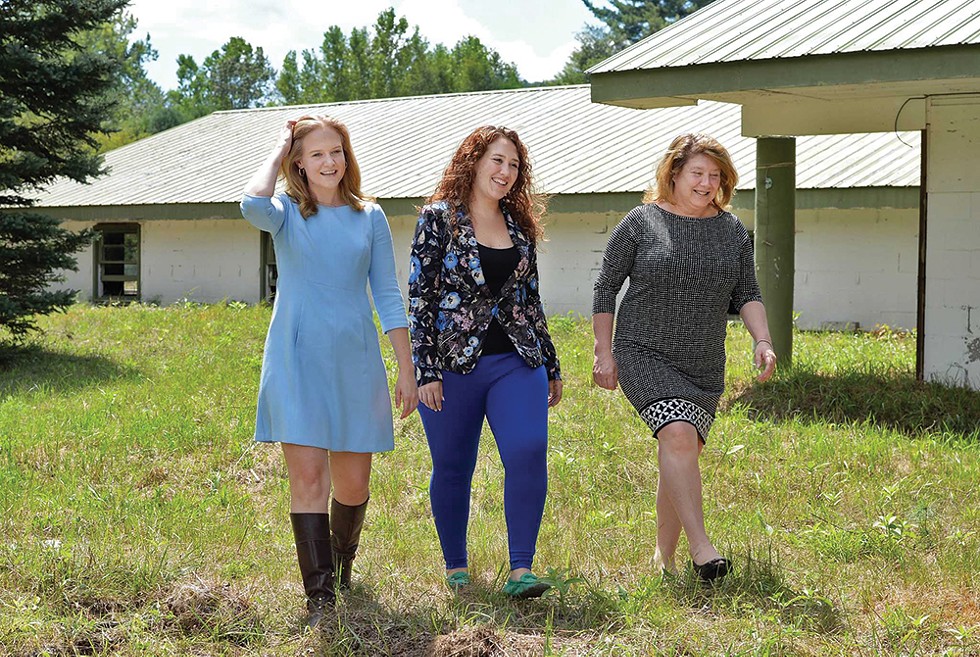
"We have an opportunity for New York farmers, our agriculture sector, and the economy to benefit, and for state agencies to set out standards that can be a model for states across the US," says Senator Jen Metzger, the newly elected progressive Democrat from Rosendale and the chair of the Senate Agriculture Committee. "We need to protect the ability of our small farms and farmers to take advantage of a new industry and the opportunities it presents."
Kaelan Castetter, CEO of the Castetter Sustainability Group, a network of small hemp farms throughout New York, is also a proponent of the micro license model, which he says would create a tiered system that allows people to get in at different levels. "That supports small farmers," he says. "And you'll have a large amount of producers funneling into independent stores, which will stock a multitude of product from multiple suppliers."
Castetter would also like to see allowances in the micro licenses for on-premises consumption, which would allow farmers to run small-scale, integrated businesses for marijuana like they already do for farm breweries and wineries. He thinks the idea could have a positive impact on Hudson Valley tourism. "It gives downstaters an incentive to come upstate to consume craft cannabis and travel and spend in our communities," he says. "Most small farmers are small businesses, and I want to create a system that allows them to thrive."
Novick, of the New York Small Farm Alliance of Cannabis Growers and Supporters, takes the idea even further. After studying the farm brewery and farm winery license models, she realized that the MRTA had a blind spot when it came to recognizing cannabis as an agricultural crop. She's drafted an appendix outlining three specific farm licenses that go further than the micro licenses and have higher environmental and sourcing standards: a farm "cannabisery" license that would require growers use 100 percent New York cannabis and regenerative growing methods in exchange for the right to conduct on-site tastings, open as many as five retail stores, and self-distribute; a craft cultivator license, which would require amending the Agriculture and Markets Law to recognize cannabis as a crop and zoning immunity for small farmers to grow up to a half-acre of craft cannabis; and a farm-based cooperative license that would allow small farmers to pool resources to better ensure success in the industry.
"Farm co-ops and cannabiseries are the antithesis of a corporate model," Novick says. "There's no way small farmers are going to be able to compete with these well-financed cannacorporations with national ambitions, unless we provide a structure like a co-op and provide for micro businesses."
Reparative Legislation
The licensing issues are entangled with social justice issues in the legal weed movement: Reformers want those who have been most affected by prohibition to have priority to enter into and capitalize on a legal marijuana industry.According to the Drug Policy Alliance, in 2017, black people in upstate cities were 12.1 times more likely to be arrested for marijuana possession than white people, a disparity that has persisted for decades.
There have been several amendments added to the proposed bill to address marijuana regulation as a criminal reform issue. As it is written now, the bill would expunge prior lower-level marijuana convictions, expand the resentencing and reclassification of other weed-related crimes, help people transition from the illicit to the legal market, and grant greater preference for sales licenses to those affected by prior marijuana convictions.
The most vocal legislator on this front has been Assemblywoman Peoples-Stokes, who struck a more cautious tone throughout the legislative process. When Governor Cuomo proposed his version of a plan in January, he talked about the need for "social equity," without specifying how tax revenue and other reparative efforts for communities impacted by existing pot laws would work. "I think we're only about 50 percent of the way to where we need to be with the governor's proposal," Peoples-Stokes told the Buffalo News in January; she called for state revenues to be specifically earmarked for "communities that have been negatively impacted" by mass incarceration and unequal enforcement of marijuana laws.
The disconnect was a sign of things to come. The Governor and seemingly all of the legislators working on the cannabis reform agree that any bill needs to include social justice provisos, but what that looks like remains to be determined. In lieu of the MRTA passing, some activists want to see a stop-gap measure like a statewide moratorium on arrests, but Senator Krueger dismissed the idea. "It doesn't really work," she said, citing the fact that New York City has technically decriminalized marijuana possession, and it hasn't had much impact on racial disparities in arrests. "As long as there are still things on the books saying it's illegal, in the big cities, at least, that's been turned into stop-and-frisk, and if they find any amount of marijuana on you, they bust you."
Three's Company
Hemp growers want a piece of the action, too, and they've been buoyed by one big development that has paved the way for cannabis reform: the explosion of CBD. Perhaps you've ingested it recently, infused into beer or a gummy or a latte or a marshmallow; maybe you've taken a CBD tincture for stress relief, or rubbed a CBD lotion on an aching joint.THC, or delta-9-tetrahydrocannabinol, is the cannabinoid molecule in cannabis that gets you high; CBD is one of the 100 or so that does not. But these other cannabinoids aren't entirely useless: There's a growing body of research into CBD's interaction with the human body's endocannabinoid system, a network of receptors that helps regulate immune activity and a variety of cognitive and physical processes, including pain, mood, and memory.
CBD is shrouded in mystery: Scientists aren't exactly sure how it works, for one, and its legal status isn't exactly fixed. CBD derived from marijuana remains classified as a Schedule I controlled substance under federal law, but CBD derived from industrial hemp (which is cannabis with much lower concentrations of THC) is not. Shipping it across state lines is technically illegal, though rarely enforced. Many of the CBD products on the market, meanwhile, are purposefully vague about their benefits, since the FDA prohibits unproven health claims.
All of this has created a CBD market that's a bit like the Wild West, with little to no quality control. A 2017 study by the Journal of the American Medical Association looked at 84 CBD products sold online, and found that 26 percent of them had less CBD than advertised, and 43 percent had more. Heavy metals, pesticides, bacteria, and other contaminants have also been found in CBD products.
There have been wasted opportunities in hemp, too. The 2018 Farm Bill removed industrial hemp from the controlled substances list; since then, New York state has operated a pilot program through the Department of Agriculture and Markets. But the infrastructure required by local farmers to take advantage of this growing market is sorely lacking. There are 100,000 acres of industrial hemp in cultivation this year, but no processing facilities or private testing labs online in the state.
The MRTA originally didn't include anything that would regulate CBD. But the most recent version of the bill brings hemp, CBD, and medical and adult-use recreational marijuana under the auspices of the Office of Cannabis Management and creates new regulatory frameworks for each sector.
Next Steps
If legalization happens through the legislature next year, it will be because the different competing camps came together in support of the MRTA. The other option is to approve a package as part of the executive budget process, which concludes on April 1 each year. To this point, there has been little talk of a statewide ballot initiative.Regardless of when it happens, the Marihuana Regulation and Taxation Act is not completely prescriptive. It leaves a lot of decision making to the Office of Cannabis Management and other regulatory authorities and raises questions it doesn't explicitly provide answers to. "Setting up a comprehensive system for cannabis will take time and requires thoughtful efforts on the part of state government, agriculture, and business to develop," Senator Metzger says.
"This is going to be a massive market with massive demand," Castetter says. "We all have to think logistically about how we get ready for that demand, responsibly."
This story is a collaboration with The River, a digital Hudson Valley newsroom covering regional topics of national importance. Sign up for The River's weekly newsletter.









